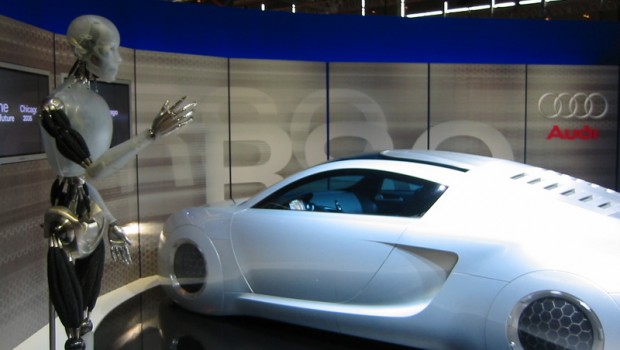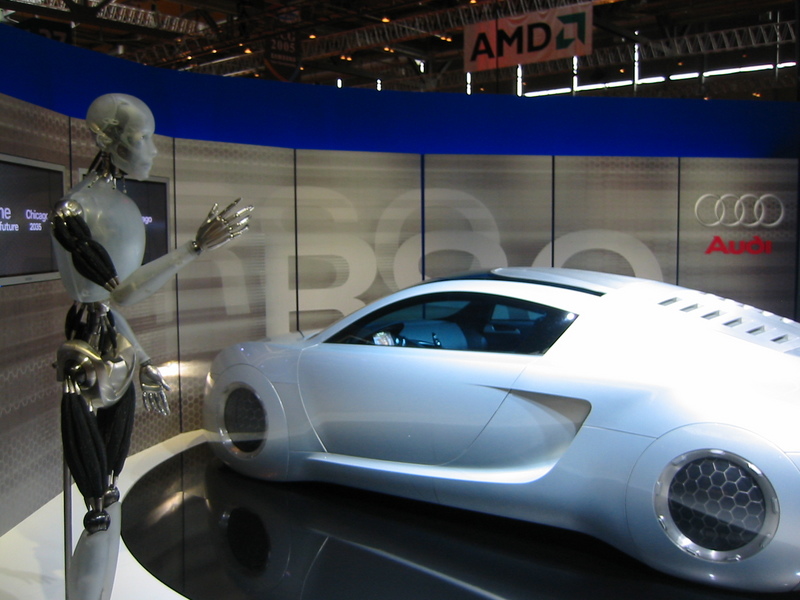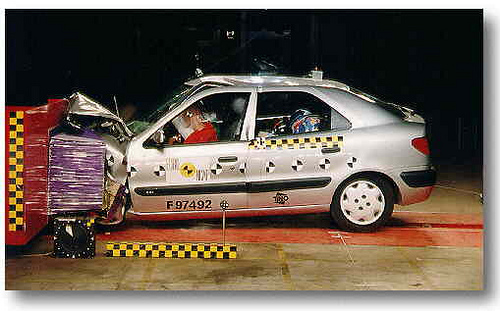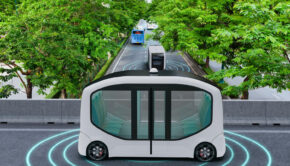Brake-or-Break: Car Safety System Precursors to the Self-Driving Vehicle
Car safety standards have grown exponentially since the dawn of the horseless carriage, a time where seatbelts didn’t come standard and airbags weren’t invented yet. Of course, now we’ve advanced to an age where R&D at car companies try to make vehicles safe to crash in just about every scenario–and while we haven’t quite perfected that just yet, we are taking huge steps toward being able to prevent accidents before they happen. This is an exciting time to be studying the car industry and the incredible strides they are making in order to create safer cars for all of us, especially as the element of human fault becomes further removed from the equation. Even tech giants Apple and Google have begun experimenting with driverless automobiles, a clear indicator that it’s only a matter of time before A.I. controls the roadway. Without further ado, here are six high tech brake-or-break systems to get you through until the self-driving cars take over.
Blind Spot Warning Systems
This is a huge improvement over good ol’ fashioned mirrors when it comes to safely changing lanes and pulling out of parking spaces. Officially dubbed the “Blind Spot Information System” (or “BLIS” for short) and first introduced in the 2007 Volvo S80, this safety feature uses door-mounted cameras to keep a vigilant “eye” on your blindspot. This feature is becoming more standard as time goes on, but a new feature is on the market called the “Blind Spot Intervention System” that counter-steers the vehicle to keep it from colliding with another vehicle. The most interesting part of this technology is that it’s completely unnecessary if you position your side mirrors correctly–that’s right, the blind spot is somewhat of a “myth”, if you follow engineer George Platzer suggestions for eliminating blind spots.
Lane Departure Warning Systems
The lane departure warning system is a lot like BLIS in that it monitors your blind spot–the difference here is that it has a much wider range than BLIS so that it can monitor approaching vehicles and their speed relative to yours, calculating whether or not you will collide with them if you change lanes. While the BLIS system generally “turns on” once the turn signal is engaged, this technology will monitor whether the vehicle is wandering out of it’s lane, indicating that the driver is asleep or distracted. In these instances, the system will audibly alert the driver until it senses course-correction, though future systems will even slow the car down and engage stability control.
Smart Seat and Seatbelts
We all know that seatbelts will save your life, but what if they were so advanced that they could save your life before the accident–even going so far as to prevent the accident entirely? A private European company called Harken is aiming to do just that. By installing “smart textiles”, a combination of fibers and yarns with electrical properties, to the seat cover and shoulder of the safety belt, Harken is looking to eliminate accidents due to drowsy driving. The smart textiles measure the heart-rate and breathing-rate of the driver, which are good indicators as to whether or not somebody is nodding off. While the system is still in development, alert systems are promised as are emergency brake features, an exciting prospect as about 25 to 35 percent of serious automobile accidents involve drowsy driving.
Forward Collision Alert
For the 2013 model year and beyond, many cars will have infrared distance and speed monitors connected to the car’s onboard computer system. Most of us have seen the commercials, where a deer or a kid on a tricycle suddenly appears in front of a vehicle, only to narrowly avoid collision because the distracted driver is alerted to apply the breaks. With the cost of cameras dropping to much more affordable levels in the last few years, the hope is that this system will come standard with black box cameras, which currently monitor impact collision and begin recording 10 seconds prior to collision. Standard operating procedure dictates that if there are objects in front of the car or a vehicle is approaching too quickly, the system will emit an audible, visual, and sometimes even steering-wheel-vibration-tactile response. The most advanced models will even apply the brakes for you in the event that human reaction time just won’t cut it.
Adaptive Cruise Control
Adaptive cruise control is pretty neat. While standard cruise control essentially maintains a constant speed, adaptive cruise control calculates the distance of objects in front of the vehicle and their speed relative to yours and then compensates by adjusting your speed accordingly. In short, you could set your cruise control on the freeway and not have to touch the pedals until you were ready to exit–the car will do the rest. This includes accelerating back up to original cruising speed, and retains the original brake-to-disengage-cruise-control feature. Now, with self-driving cars on the horizon, what we’re really seeing here is a precursor to how A.I. will accelerate, slow down, brake, and stop in real application.
Rollover Prevention
Ever go around a corner super fast and feel like you’re going to roll your vehicle over like Star Fox doing barrel rolls? Up until now, most cars could only offer an electronic stability control system, while others offered up what is called a preparation system that tightens seatbelts and extends roll bars. The new rollover prevention system is more advanced that preparation systems, in that it when it measures and senses an imminent roll-over it will apply the brakes as well as initiate throttle modulation. This is by far one of the coolest new safety features that show just how close we are to the self-driving vehicle.
About the author:

Andrew Heikkila is a writer from Boise, ID who covers all things tech and future. Follow him on Twitter @AndyO_TheHammer

















